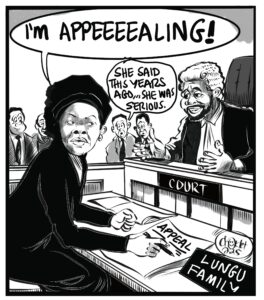Zimbabwe, under the new leadership of the Robert Mugabe mentored President, Emmerson Mnangagwa, may take another ten years to marginally reverse the deteriorated economic fortunes that once anchored the Southern African country among the world’s emerging markets.
The economic policy changes that started in the late 1990s, and focusing on land reforms, had a significant negative economic impact to the economy of Zimbabwe to an extent only transformational economic reforms can induce investor confidence and economic growth.
By 2016, unemployment stood at nearly 90 per cent, inflation started to rise in the US dollar denominated currency, poverty levels at 75 percent, budget overspend at over 25 per cent, GDP growth rate barely rising above 4 percent while real incomes dropped by more than 70 percent in the past 18 years. Investor confidence is at its lowest and though there is an indication of endorsement of the new regime by leaders of some leading economies, the inflow of capital into Zimbabwe will take more than change at the top leadership.
Mnangagwa has to get to the heart of the problem that led to this: the 1999 policy reversals that targeted property rights. While combatting corruption appears part of his agenda, it should not be a priority if his focus is to reverse the economic fortunes that have affected the people of Zimbabwe. It is largely about investment, and Zimbabwe has fallen way behind its peers on the Global Competitive Report since 2000.
Analysing the critical indicators that drive foreign direct investment that Zimbabwe desperately needs, the country does not seem to have significant problems with most of them. Zimbabwe has among the best educated people in the region and many of them are willing to go back to their country with minimal assurances of good incomes. In terms of infrastructure, though weak and fragile at the moment, it has offered the resilience in the past two decades. If what Zimbabwe went through was experienced by some of its neighbours with a weak infrastructural base, it would have been a complete disaster, with possibly no country to talk about. Fortunately for Zimbabwe, both physical and financial infrastructure still have signs of life.
Zimbabweans have been investors in technology in neighbouring countries and it will take a measure of political stability for its nationals to relocate back home. The real issue is about governance. Governance has been the main source of the problem and this may explain why Mnangagwa quickly pledged to support the Constitution, which points to the independence of the institutions of governance, particularly the judiciary. This is where Mnangagwa has to signal real change, not cosmetic but real.
From the time three high court judges resigned within a space of four months in 2001 due to political interference, investors began to worry about the strength of institutions to protect their property. This single action promoted what is now termed as the region’s ‘mixed record’, overshadowed among other things, by the controversial land redistribution policy in Zimbabwe.
Zambians who are commenting on various platforms that a rejuvenated Zimbabwe may be bad for Zambiain terms of competition for FDI should know that the reverse is true; a positive investment profile for Zimbabwe will be a positive regional profile! It means Mnangagwa has to read and push back to parliament, in the eyes of the global cameras, revisions to Article 16 of the National Constitution. The article protects property rights and fundamental rights of all Zimbabweans, black and white. This action alone is likely to trigger the much-anticipated economic change. FDI inflow will, however, not take place overnight as most investors still want to be in a ‘wait-and-see’ mode, at least for about ten years! They know it is the same regime that led to this but with only some substitution at the top.
The contributor is author of the book, ‘Determinants of Foreign Direct Investment in the Southern African Development Community- Risks and Opportunities’ available on various online distributors.























